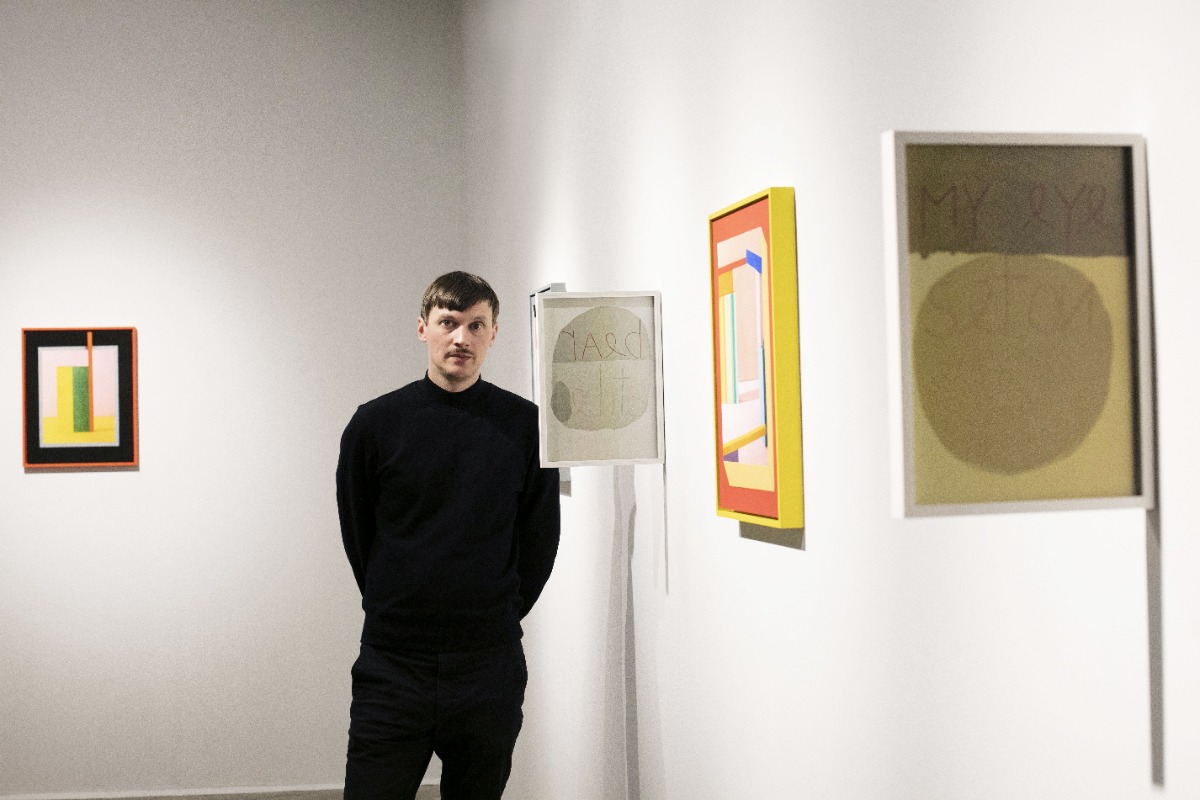
Material Images
An interview with Paulius Petraitis
Paulius Petraitis (1985) is an artist, theorist and independent curator, based in Vilnius. I meet Petraitis a few hours before the opening of his show “Surfaces”, currently on view at the ISSP Gallery and part of the 2022 Riga Photography Biennial program. The exhibition thinks through the materiality of photographic images as well as the broader cultural and social implications of image carriers in relation to their source material.
This is Petraitis’ first solo show in Latvia, but he is no stranger to the Rīga photography scene. He has collaborated with the Riga Photography Biennial for many years – Petraitis was the curator of “On Photographic Beings” at the Latvian National Museum of Art in 2020 and “Measured Perspectives” at the Riga Art Space this year, while in 2018 his personal work was included in “Screen Age I: Self-Portrait”. “Surfaces” is on view until July 3.
View from the exhibition “Surfaces” at the ISSP Gallery. Photo: Kristīne Madjare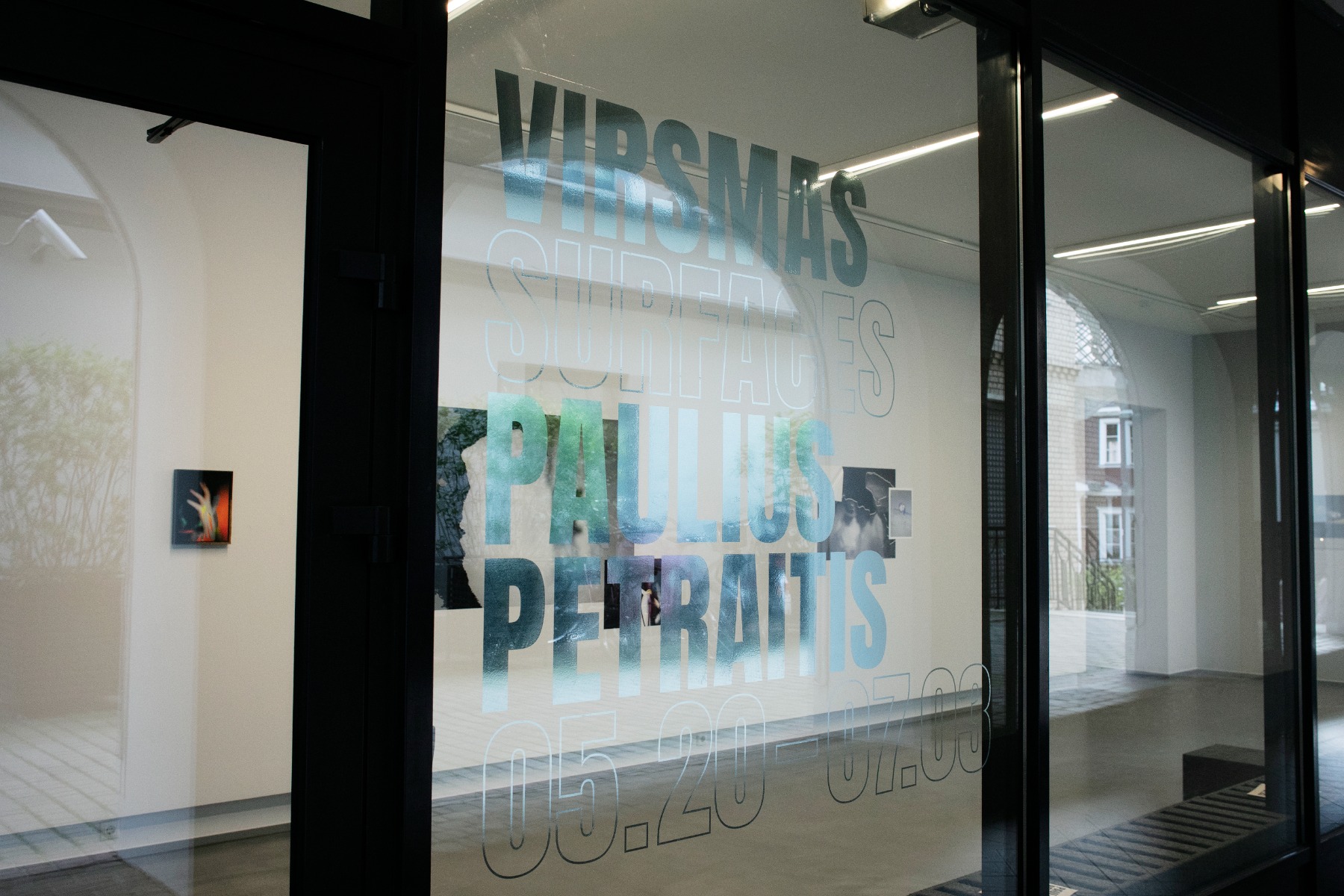
Your practice revolves around image-making in a social and cultural context. Would you call yourself a photographer, or not really?
That’s a good question. My practice revolves around photography. Photography is at the center of what I do. I consider my curatorial and artistic work as parts of the same practice – as two sides of it. I wouldn’t call myself a photographer in a narrow sense.
Would you call yourself a photographer without a camera, or do you also take pictures?
I do take photographs. Often photographs are the source material for what I do, but then there are so many steps afterwards that it usually becomes something else. I’m also quite interested in these stages and what they do. Sometimes I exaggerate certain manipulations that are taken for granted or otherwise remain invisible. My work is often about making these technological interventions more visible in order to raise certain questions about them.
View from the exhibition “Surfaces” at the ISSP Gallery. Photo: Kristīne Madjare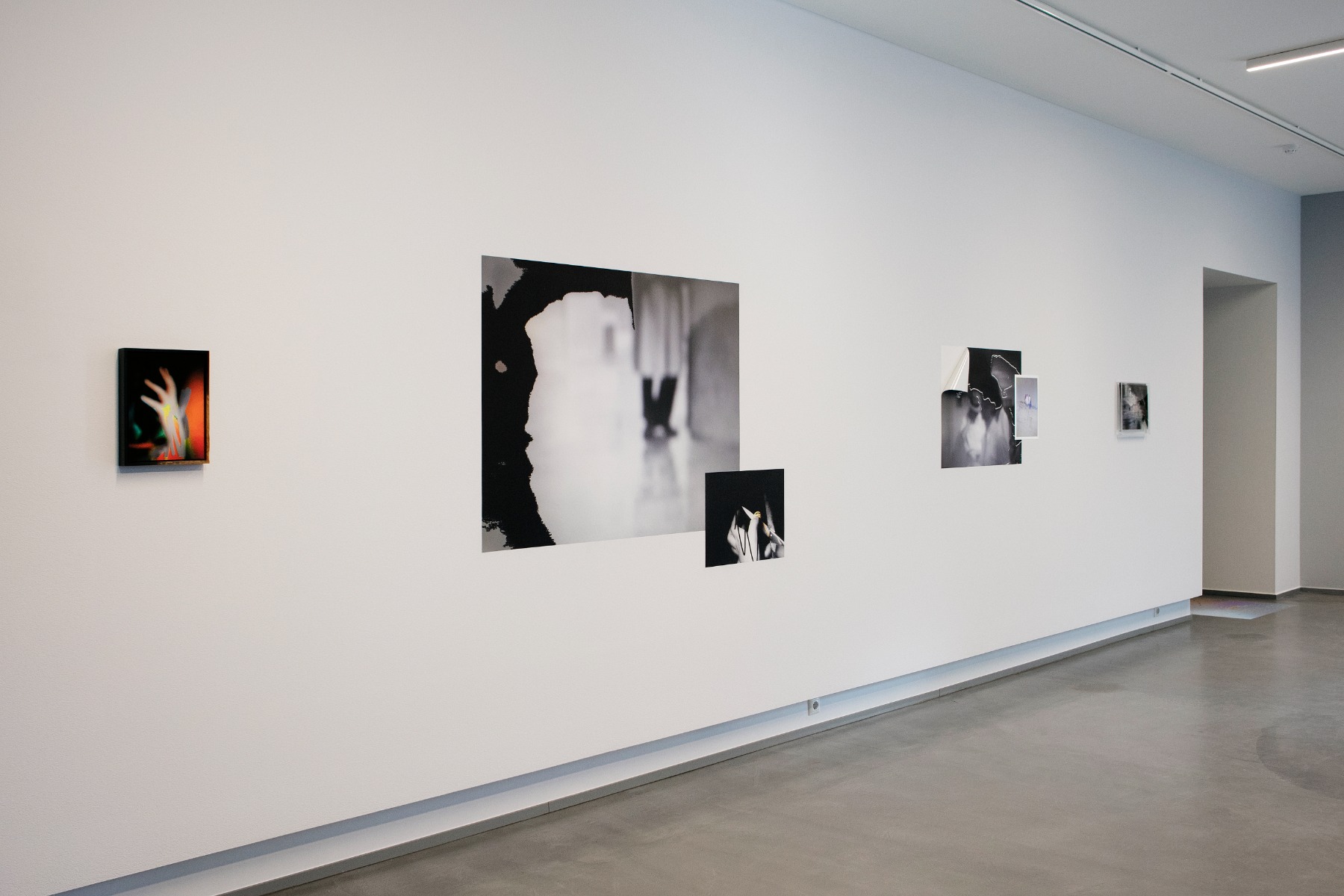
Your show “Surfaces” opens today. Can you talk a bit about the exhibition and what it is about?
“Surfaces” is a relatively new project that I started last year and it is still ongoing. This will be the first public presentation of it. It deals with the surface qualities of images. It explores the materiality and texture of a print as well as different ways to show photographs and images. As I wrote in the catalogue text, I think my interest derives from the fact that we often consume photographs as if they are transparent. We usually don’t really look or consider the carrier, yet there is no photograph without some kind of materiality. I try to emphasize this. It starts from there. The project is still ongoing.
View from the Riga Photography Biennial 2022 exhibition ‘Measured Perspectives’, curated by Paulius Petraitis. Artist Katja Mater. Photo: Madara Gritāne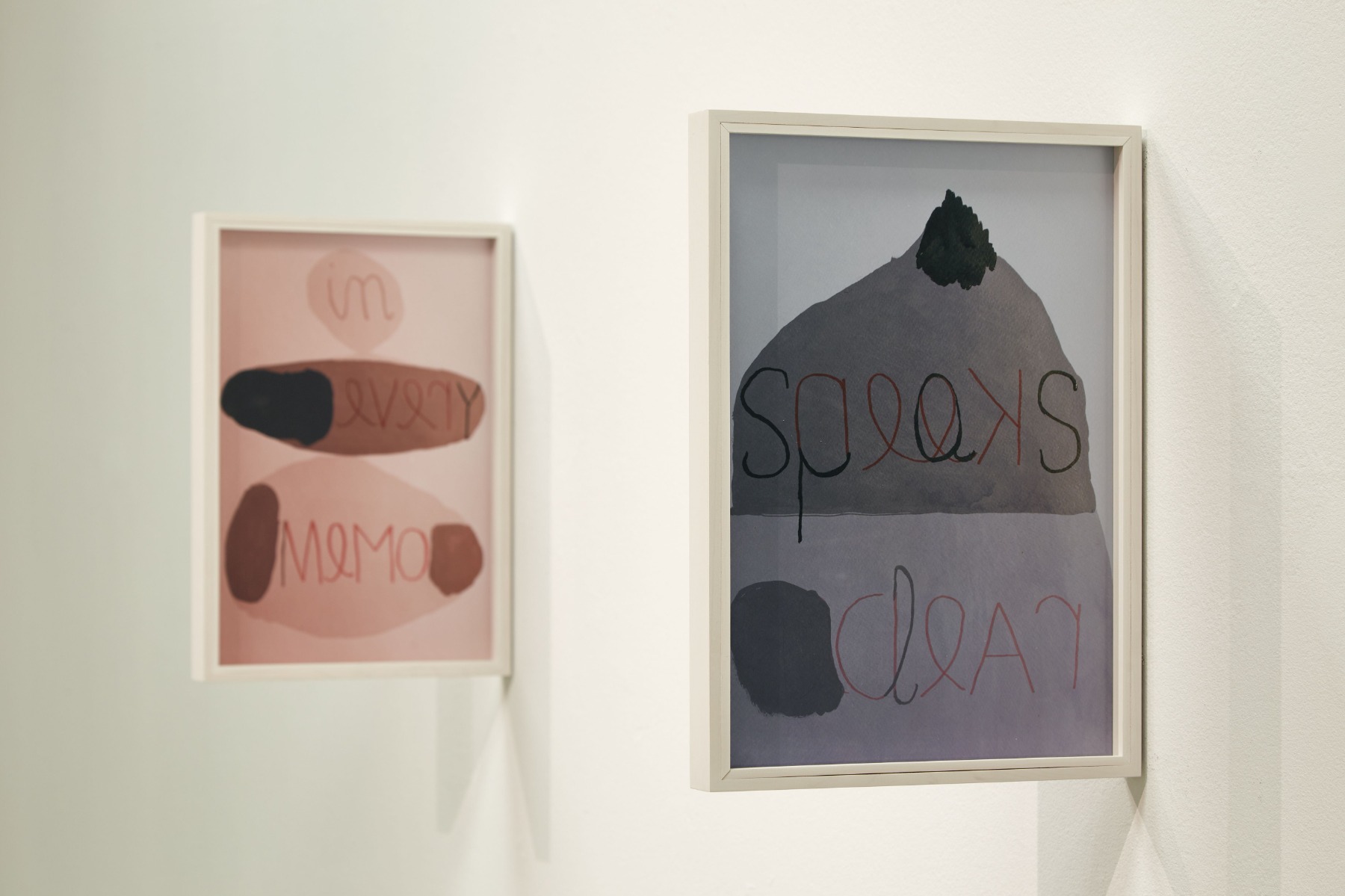
As I understand, the project also explores the relationship between analogue and digital?
Not explicitly, it’s just that some of my interventions are rather analogue. Images shown in the exhibition are, at their source, small, isolated moments or fragments from films that I have re-photographed.
I re-photograph them mostly through my computer screen. This is the stage for analogue interventions. For example, for some of the images I sprayed my screen with a good amount of water, or gathered dust on the screen. But a lot of other interventions are digital. So the project doesn’t really explore this analogue vs. digital debate per se. It just uses both ways to add to the texture of the image. Maybe, the more correct way would be to say that I treat these analogue and digital interventions as layers that I can add on top of the image. Sometimes the frame adds another layer to that.
View from the Riga Photography Biennial 2022 exhibition ‘Measured Perspectives’, curated by Paulius Paper. Artists Erin O’Keefe and Katja Mater. Photo: Madara Gritāne
For this show you also have bespoke frames. Can you talk a little bit about that?
Yes, there are three custom-made frames. Two were made in collaboration with US artist Sam Margevicius. He made a wooden frame for an image titled “Skin-deep”, one side of which is glossy and painted over several times while the other side is tactile and rough – you can almost feel the texture by just looking at it. We also worked together on the frame for “Swimmer” work. That’s a plexiglass frame that is filled with water and the image is plunged into it — the swimmer sort of “swims” in the water.
The third custom frame was made in collaboration with Pauls Rietums. It’s a shattered glass that adds a layer to the image called “Headlights”.
View from the Riga Photography Biennial 2022 exhibition ‘Measured Perspectives’, curated by Paulius Petraitis. Artists Erin O’Keefe and Katja Mater. Photo: Madara Gritāne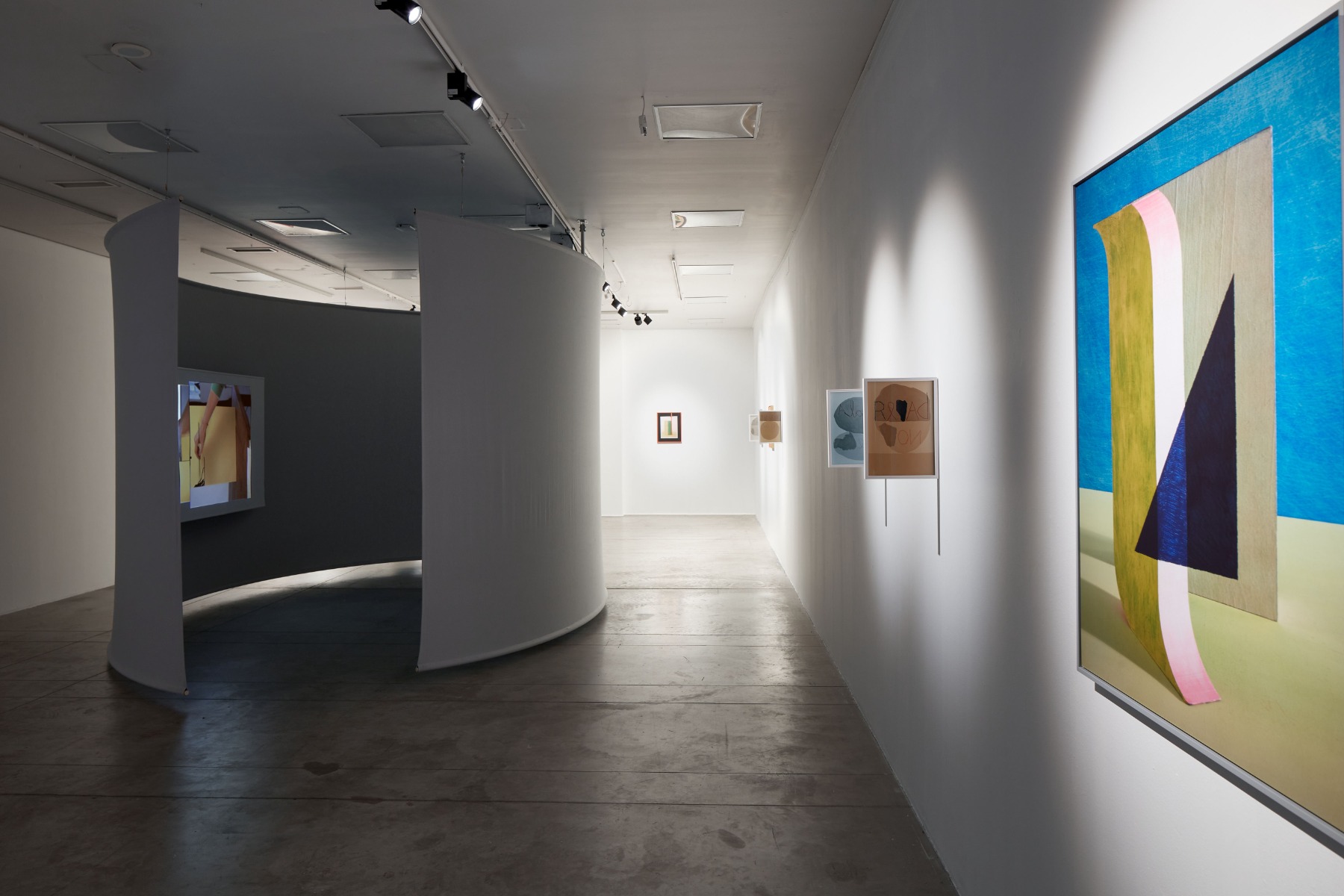
Often people who exhibit photographs want to have nice frames, but they don’t actually want them to be noticed by people – the frames should carry the image in a tasteful yet invisible way. I’d say that it’s not very often that we see the frame as a part of the artwork.
That’s true. I think it goes back to what I was saying about an interest in emphasizing certain steps that otherwise usually remain invisible, or are taken for granted. I’m quite interested in playing around with framing. You are very much right that the frame here becomes part of the artwork – the frame doesn’t just protect or hang the image, but is part of the object. I’m interested in the “objectness” of images. Even if they are digital, photographs need to have some kind of a carrier, a digital code that reads and displays it. This code is never neutral. If we look at images on smartphones, they are made to look better on the phone than if you print them – it’s just the way how screens work.
I’m interested in this idea that carriers of images are not something neutral, transparent, or invisible, but that they are structures that actually add certain aspects. Maybe by exaggerating it, I’m also trying to understand it better myself. What does a carrier do? It’s a bit of a playful attitude. I don’t really have answers. This project is still very much ongoing, but I’m trying to raise certain questions that are also interesting for myself.
View from the exhibition “Surfaces” at the ISSP Gallery. Photo: Kristīne Madjare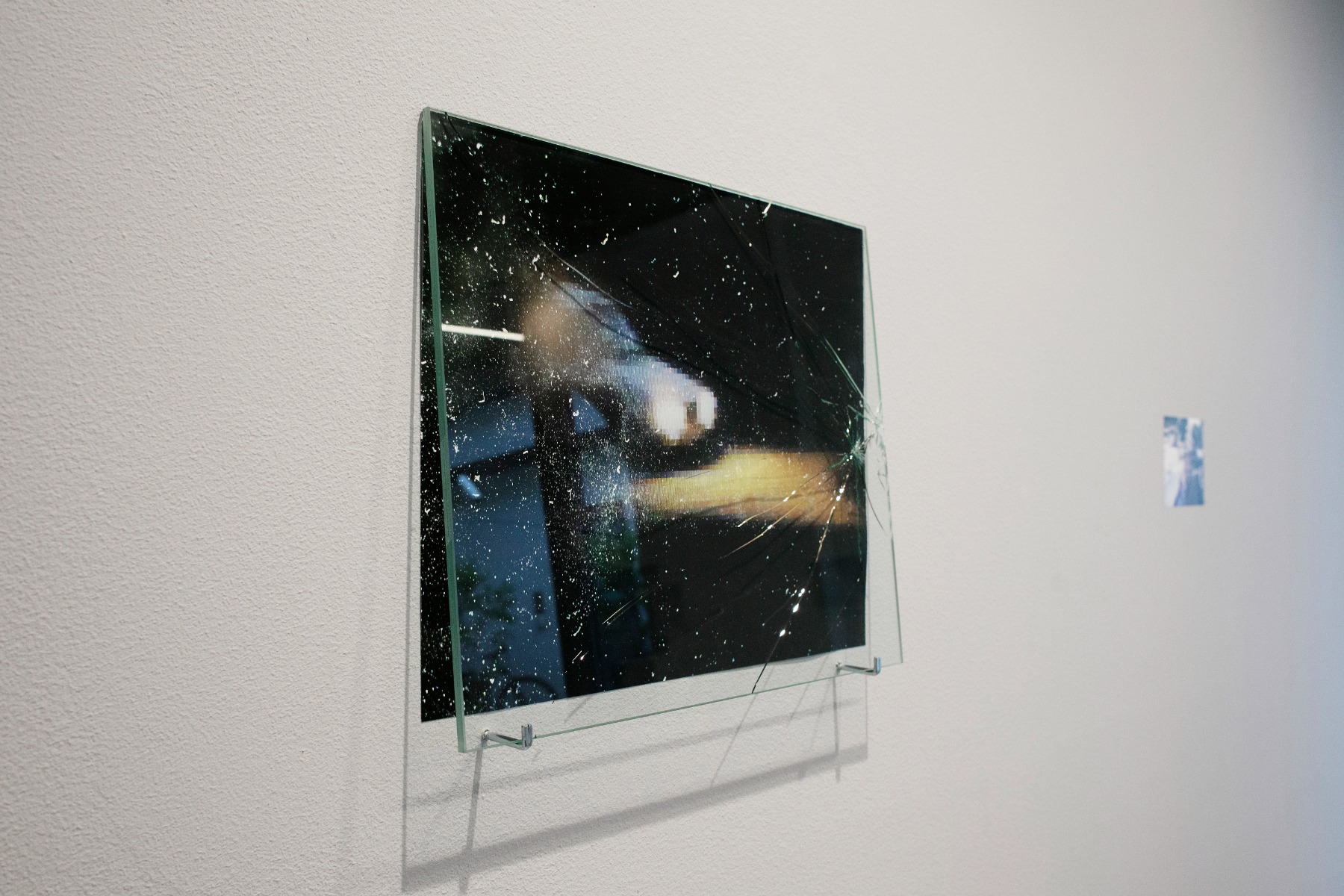
You already mentioned this before, but we expect to see the image somehow without its surface when we look at it. There is also a type of inability of photography to capture whatever the subject of the image is. You also have a book called “Too Good to be Photographed”, which is about failure. I feel like there is an underlying thread of interest in failure in your work: failure of the media, of the carriers, of the intentions. Why do you think you’re drawn to that?
It’s not an easy question. Why am I drawn to failure? Maybe because I think that today society tries collectively to suppress imperfection and failure, yet it is very much part of our lives and daily routines. I think that when we try to only promote the good or successful stories, which is emblematic to social media, we do something a bit detrimental to ourselves. These stories are not entirely realistic – they don’t show the full side of reality. For me, talking about and accepting failure is important: accepting that it is actually a part of any practice and that it can lead to something else can become an important step.
I’m interested in that. So, maybe subconsciously I try to reclaim failure as a normal term. There is a bit less of that in this project. But you’re right that in “Too Good to be Photographed” it was very much at the center, as well as in my last project, “A man with dark hair and a sunset in the background”, which looks at how visual recognition works and the moments when it breaks. I’m interested in this moment when technology stops functioning as it’s supposed to.
View from the exhibition “Surfaces” at the ISSP Gallery. Photo: Kristīne Madjare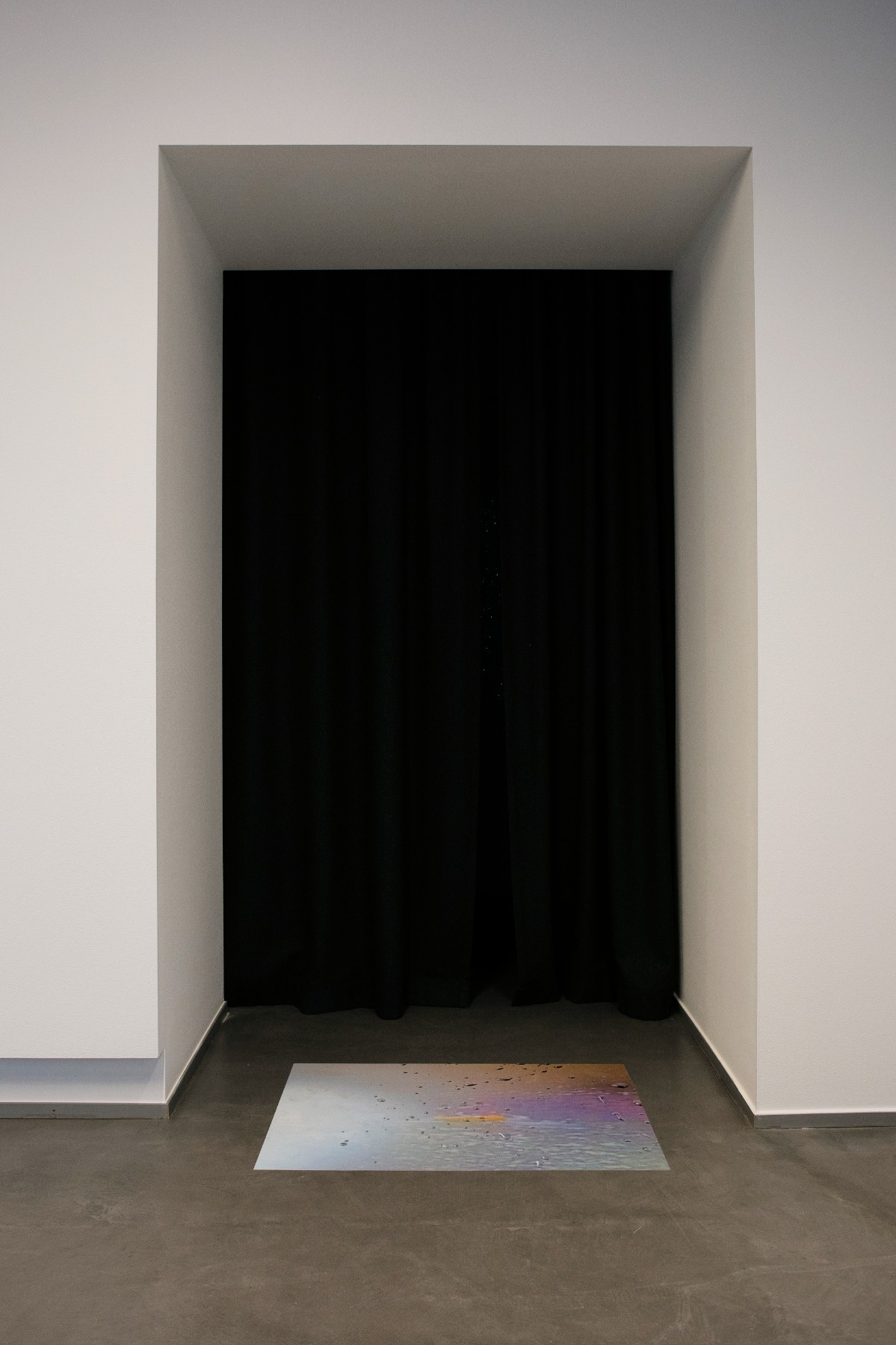
Here you’ve collaborated with frame-makers and also with a music composer. In your work as a curator, you have to collaborate with other people. How do you see these relationships in the context of failure? I feel like often when we work with other people, we have expectations from both sides, and then how much space is there to fail in the production of art?
I think for me, the interest in collaboration is more practical. I just like working with people. I also do research; it’s a large part of my work and it can become lonely. So I like to balance that with working with people. It brings inspiration and new ideas – that’s primarily my interest in working with others and collaborating. Of course, there’s room for error and compromise. I think that maybe I’m willing to compromise more with other people than with myself.
Can you talk a little bit about the audio component of this exhibition?
The sound is an important ingredient in the exhibition. It’s by Gailė Griciūtė – a sound artist and composer. Her starting point was watching the films that I took the original moments from and recording some of their sounds. In the process she used a magnetic tape and made various interventions to its materiality. One of the ways was marinating the tape or boiling it in acetone. In some parts the tape was scratched completely. This way, Gailė mimicked my interest in surfaces through this process of recording sound, re-recording it, and manipulating the physical carrier of the sound. You can hear these little scratches – a bit of a gentle noise in the audio.
View from the exhibition “Surfaces” at the ISSP Gallery. Photo: Kristīne Madjare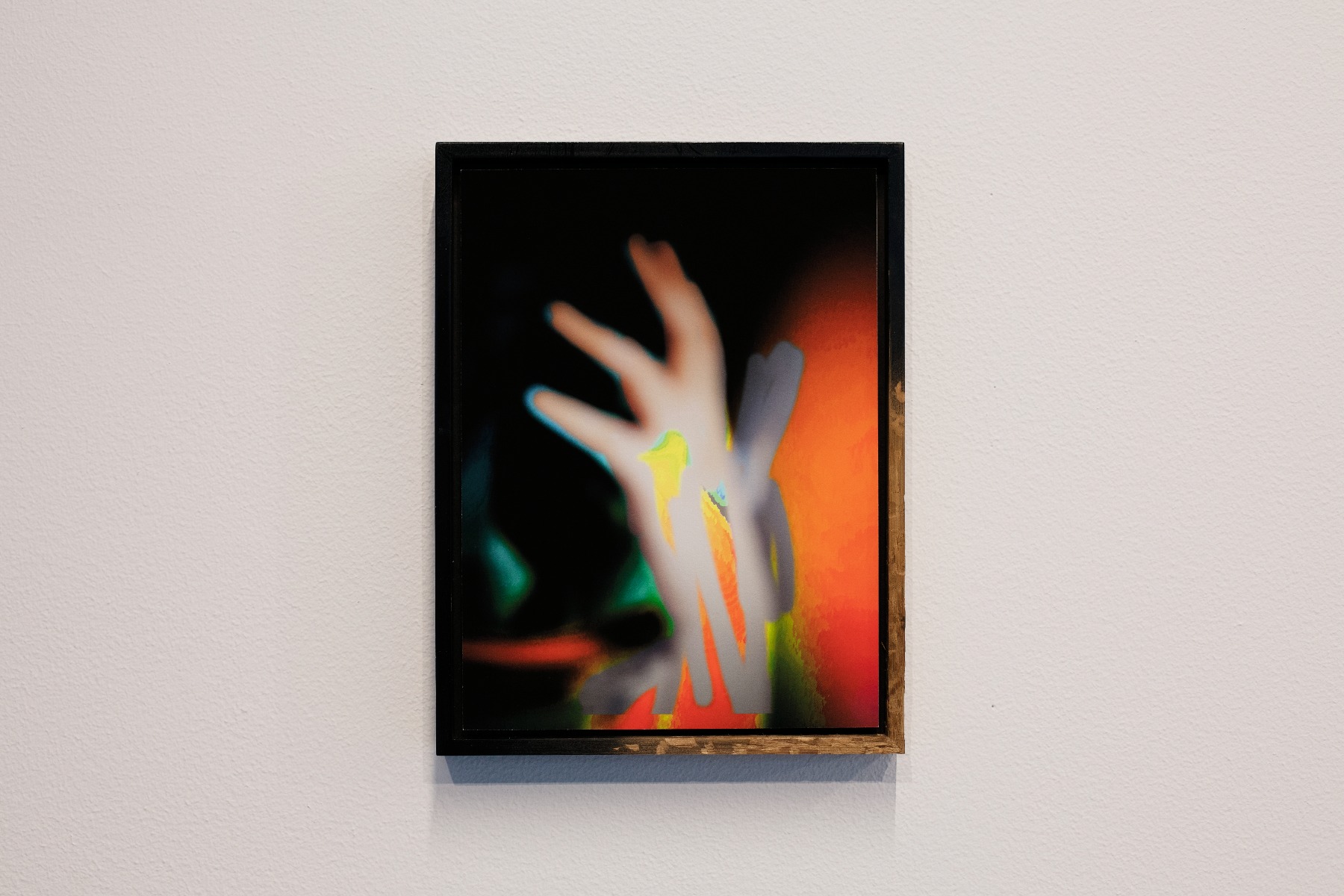
How does your process and thinking differ when you work on your own art versus curating?
I see them as different sides to the same practice. The questions I’m exploring and the themes and topics are very similar, it’s just that when I do my own work it’s more personal. I often start from quite vague ideas that get developed through experimentation and working hands-on. They develop slowly and other people come into the project somewhat later.
When I’m curating, it often starts from thinking either about the topic I’m currently interested in or about specific people that I would like to work with, and they come into the project at a very early stage. Curating, for me, is more collaborative and there’s a bit less of my personal self, if that makes sense.
View from the exhibition “Surfaces” at the ISSP Gallery. Photo: Kristīne Madjare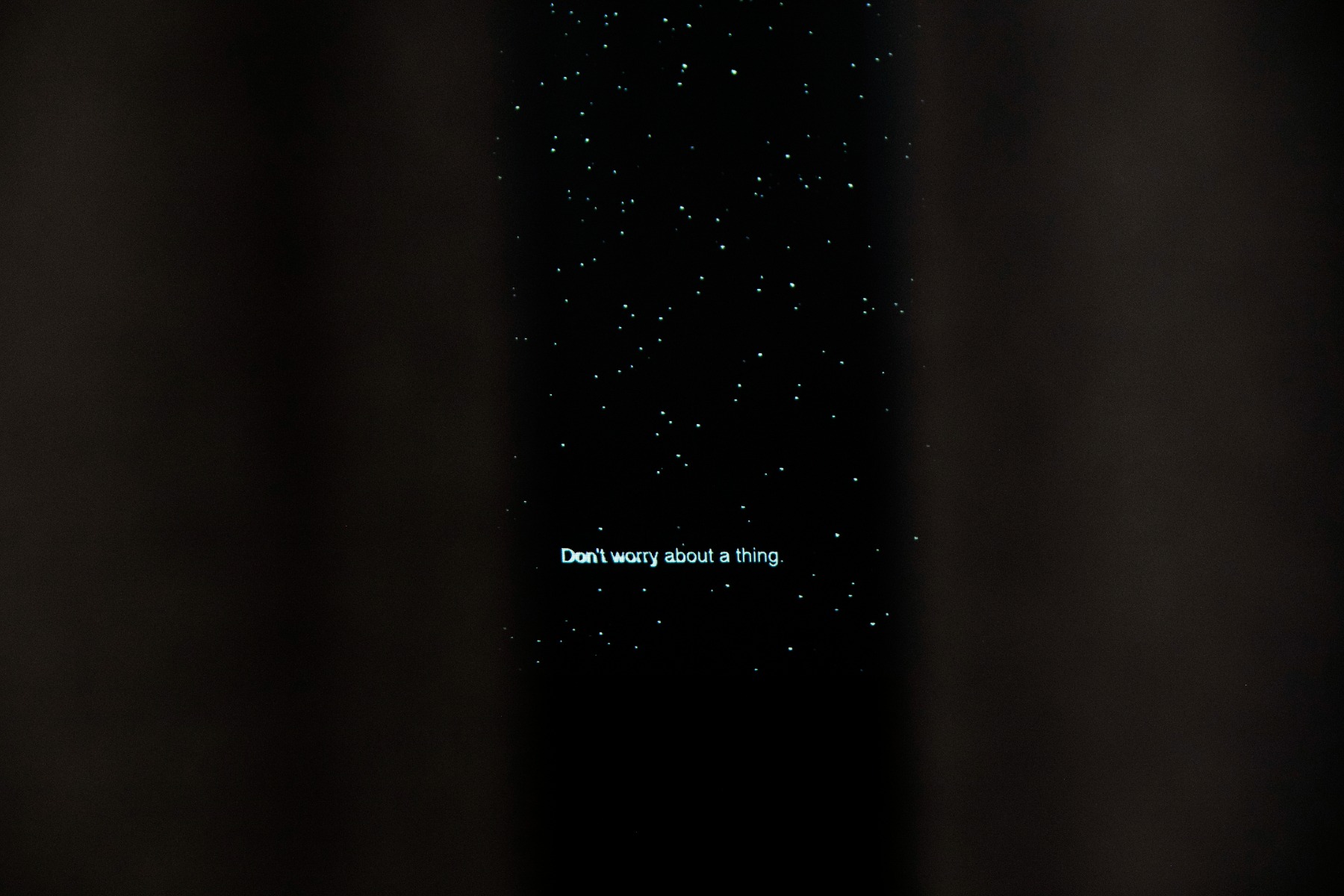
Going back to the theme of this exhibition and these questions of materiality, of images – where is the original source of something? Do you think nowadays images in some ways are more relevant than the objects they refer to? I was thinking of this in the context of the art world. Often artists are more concerned with the documentation of their work than the work itself. Would you agree that in some sense, the image is more important than its source?
In photography theory and visual culture studies there have been debates about the way images create a sort of universe of their own and no longer need to remain tied to their objects in order to function. Images start from an object, yet they create, in the words of François Laruelle, “a parallel universe.” And this is one of photography’s strengths – that it is able to create this universe that looks like the world, yet actually isn’t. It is something else.
I’m quite interested in this multi-faceted, complex yet fragile relationship between a photograph and its object. That interest was at the core of “On Photographic Beings”, an exhibition I curated at the Latvian National Museum of Art for the Riga Photography Biennial in 2020. I was reading Jean-Luc Nancy then and liked his idea that what images bring into presence is absence. When you see an image, you somehow subconsciously realize that the object is absent, that it’s actually not there. There are a lot of possible perspectives – this relationship between object and image is very multi-dimensional. There is a lot of photography theory that argues that this link is essential, a sort of indexical essence of the photographic medium: this is what happened. But I think nowadays I’m more interested in how images are able to create new meanings. That they don’t really point to certain fixed objects, but rather – through our knowledge of culture, visual theory, art – are able to elicit new meanings that are not explicitly part of their content. I’m currently quite curious about that and it’s part of my research as well.
View from the exhibition “Surfaces” at the ISSP Gallery. Photo: Kristīne Madjare
You mentioned that in 2020 you curated a show for the Riga Photography Biennial, so you’ve been working with this event for a few years now. How did this relationship first start, and what has it been like?
I was first invited and took part in the main group exhibition in 2018. After that I was invited to curate a show for the next edition in 2020, and that’s how we made “On Photographic Beings”. It was quite a complicated project because it happened during the pandemic, was postponed, and was moved to another location. This collaboration is ongoing. I could say that I am interested in working within the Baltic region. I’ve also been working with the Tallinn Photomonth and the Estonian Academy of Arts. I enjoy these collaborations. The scenes are quite similar but also distinct enough so it’s interesting to navigate through them.
View from the Riga Photography Biennial 2022 exhibition ‘Measured Perspectives’, curated by Paulius Petraitis. Artists Erin O’Keefe and Katja Mater. Photo: Madara Gritāne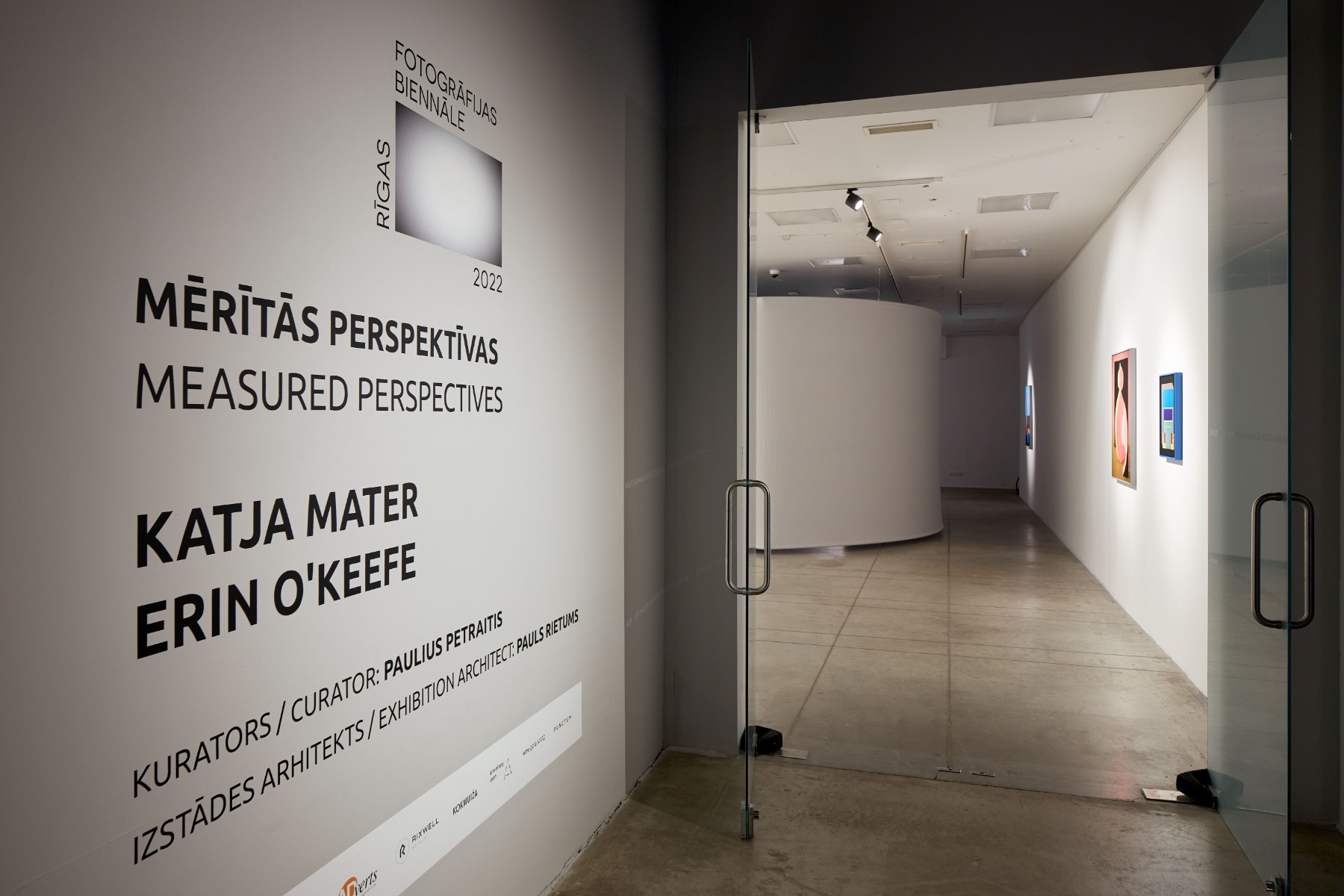
One last question and then I’ll let you get back to installing the show. What do you have coming up after this exhibition?
I’m curating a show in Vilnius of the British artist and photographer Tom Lovelace. This will be a solo exhibition opening on June 30 at Atletika gallery. It will be a sort of expanded photography show with a series of performances and video work, and some objects that relate to the idea of the photographic but are not photography in the narrow sense.
“Surfaces” is still ongoing. I will hopefully look for ways to show it to the public in Lithuania and develop it. Already during this install I got some ideas of what more I could do and how I could expand it.
Title image: Paulius Petraitis at the opening of the Riga Photography Biennial 2022 exhibition ‘Measured Perspectives’.
Artists Erin O’Keefe and Katja Mater. Curator Paulius Petraitis. Photo: Kristīne Madjare